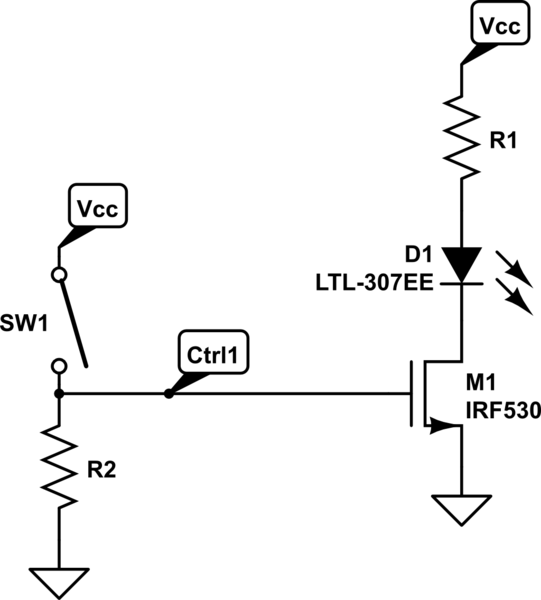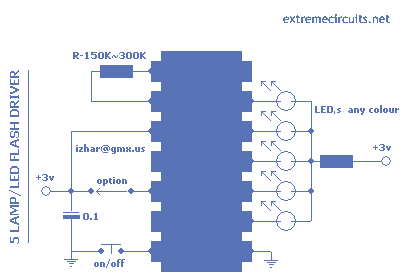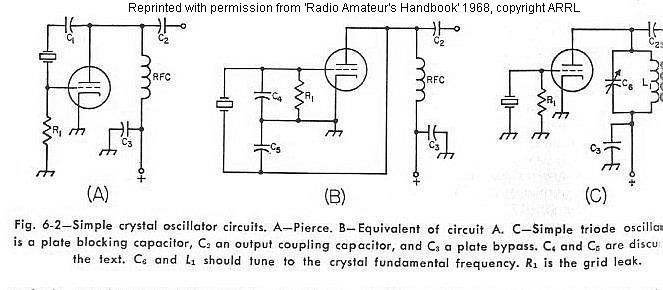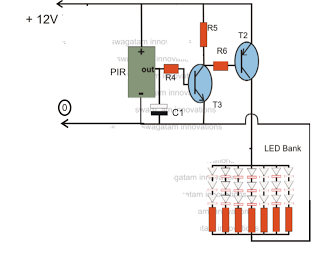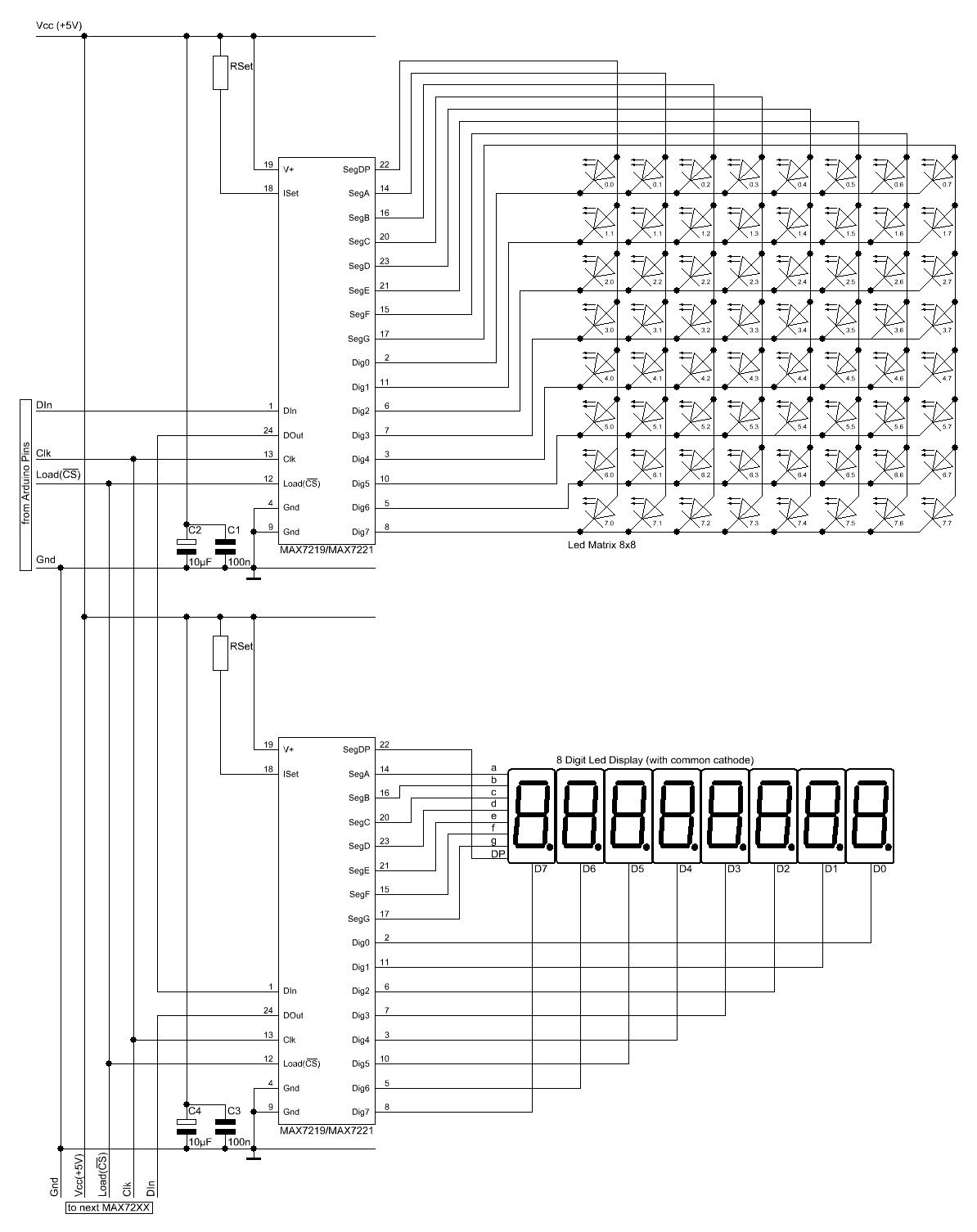
LED indication Integrated Circuits
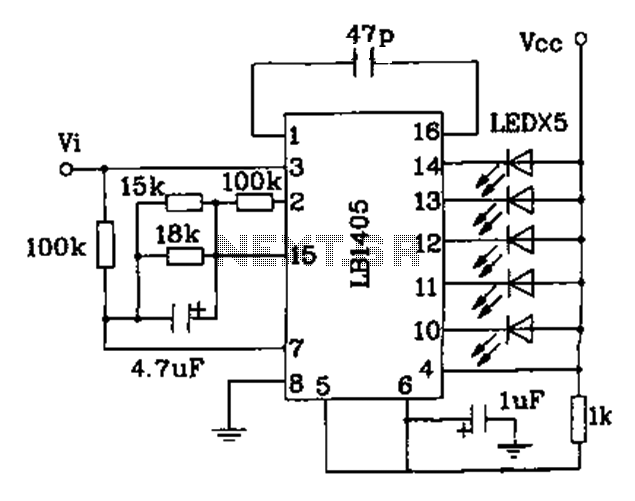
The LB140 is depicted in Figure as a typical driver IC circuit for a five-digit LED level indicator. The BL1405 is commonly utilized in tape recorders for level indication.
The LB140 integrated circuit serves as a driver for five-digit LED displays, facilitating visual representation of audio signal levels. This functionality is critical in audio equipment such as tape recorders, where accurate level indication is essential for optimal performance and sound quality. The circuit typically comprises several key components, including the LB140 IC, a series of resistors, capacitors, and the LED display itself.
The LB140 operates by receiving an audio signal input and processing it to drive the LEDs, which light up in response to the amplitude of the input signal. The circuit is designed to convert the analog audio levels into a digital format that can be visually represented, ensuring that users can easily monitor the signal levels during recording or playback.
In a typical application, the audio input is fed into the LB140, which amplifies and rectifies the signal. The resulting voltage level is then compared against predetermined thresholds, with each threshold corresponding to a specific LED in the display. As the audio level varies, different combinations of LEDs illuminate, providing a clear and immediate visual indication of the signal strength.
Additionally, the BL1405, as a variant, may include features such as built-in calibration options or enhanced sensitivity, making it suitable for a wider range of audio equipment. This versatility allows for its integration into various designs, ensuring that it meets the needs of both consumer and professional audio applications.
The overall design of the circuit emphasizes reliability and ease of use, making it an essential component in modern audio recording and playback devices.LB140 is shown in Figure Five-digit LED level indicator typical driver IC circuit, BL1405 widely used tape recorders and tape recorders do with level indication.
The LB140 integrated circuit serves as a driver for five-digit LED displays, facilitating visual representation of audio signal levels. This functionality is critical in audio equipment such as tape recorders, where accurate level indication is essential for optimal performance and sound quality. The circuit typically comprises several key components, including the LB140 IC, a series of resistors, capacitors, and the LED display itself.
The LB140 operates by receiving an audio signal input and processing it to drive the LEDs, which light up in response to the amplitude of the input signal. The circuit is designed to convert the analog audio levels into a digital format that can be visually represented, ensuring that users can easily monitor the signal levels during recording or playback.
In a typical application, the audio input is fed into the LB140, which amplifies and rectifies the signal. The resulting voltage level is then compared against predetermined thresholds, with each threshold corresponding to a specific LED in the display. As the audio level varies, different combinations of LEDs illuminate, providing a clear and immediate visual indication of the signal strength.
Additionally, the BL1405, as a variant, may include features such as built-in calibration options or enhanced sensitivity, making it suitable for a wider range of audio equipment. This versatility allows for its integration into various designs, ensuring that it meets the needs of both consumer and professional audio applications.
The overall design of the circuit emphasizes reliability and ease of use, making it an essential component in modern audio recording and playback devices.LB140 is shown in Figure Five-digit LED level indicator typical driver IC circuit, BL1405 widely used tape recorders and tape recorders do with level indication.
